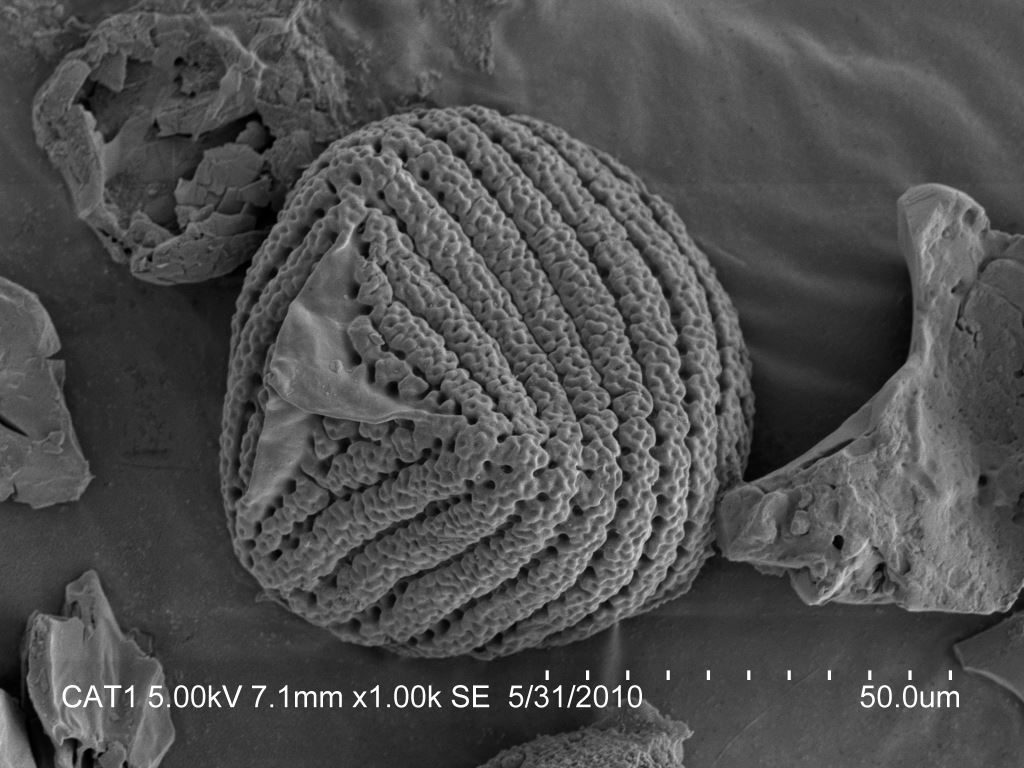 A team coordinated by researcher Mário Mendes from the Center for Marine and Environmental Research (CIMA) of the University of Algarve discovered a new species of plant. The research group identified for the first time a spore of fetuses from the Anemiaceae family which, “until today, has only been identified in Portuguese paleoflora”, according to UAlg.
A team coordinated by researcher Mário Mendes from the Center for Marine and Environmental Research (CIMA) of the University of Algarve discovered a new species of plant. The research group identified for the first time a spore of fetuses from the Anemiaceae family which, “until today, has only been identified in Portuguese paleoflora”, according to UAlg.
The discovery of this spore, which was baptized with the scientific name Costatoperforosporites friisiae, “adds new knowledge to the diversity of the Cretaceous palynoflora of the Lusitanian Basin”.
«The study of fossil plants is of great paleoecological interest, as it allows us to draw conclusions about the local and regional paleoclimatology of that time, namely with regard to temperature and precipitation anomalies», explained researcher Mário Mendes.
«The description of this new species, in the scope of a study that seeks to understand the paleoenvironmental conditions that presided over the radiation and development of angiosperms (flowering plants), undoubtedly constitutes an excellent contribution to Science and to the advancement of Paleobotany in our country. Country, as this area is still very little explored», considered, for its part, the Algarve university.
According to the university, «the association of fossil plants so far studied in the fossiliferous deposit of Catefica, in the municipality of Torres Vedras, suggests that in the Lower Cretaceous, the southern interior of the Lusitanian Basin was covered by relatively open vegetation, which prospered in conditions hot and seasonally dry'.
The discovery of the team led by Mário Mendes was made within the scope of the CretaCarbo project, under which studies were started with the objective of understanding the paleoenvironmental conditions that presided over the radiation and ecological diversification of angiosperms in the Lower Cretaceous of the Basin Lusitaniana, as well as the evolution of terrestrial ecosystems through time».
«Angiosperms developed from the Lower Cretaceous, about 135 million years ago and currently dominate the terrestrial vegetation. In Portugal, the Cretaceous is well represented and has characteristics that allow it to follow the floristic evolution from the Lower Cretaceous, with a predominance of ferns, conifers, ginkgos, cycas, Bennettitales and other groups of already extinct plants, to the Upper Cretaceous where the Angiosperms colonized almost all terrestrial ecosystems. However, despite the studies developed, many aspects related to the evolution of angiosperms still remain to be clarified», framed the UAlg.
The results of this investigation, which have aroused great interest on the part of numerous researchers from other countries, such as France, Japan, Sweden, Germany and Spain, were recently published in a scientific journal of international circulation indexed in the ISI Web of Science.
The CretaCarbo Project (PTDC/CTE-GIX, 113983/2009), funded by the Foundation for Science and Technology (FCT), also had as partners the University of Coimbra and the Universidade Nova de Lisboa.


















Comments